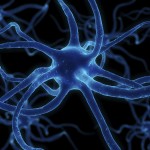Neuropathic Pain Management
Your ads will be inserted here by
Easy Plugin for AdSense.
Please go to the plugin admin page to
Paste your ad code OR
Suppress this ad slot.
 There are various types of neuropathic pain like complex regional pain syndrome, sympathetically maintained pain, fibromyalgia, interstitial cystitis and irritable bowel syndrome. Their treatment can be difficult. However with precise diagnosis and usually a combination of treatments, there are high chances to improve pain and restore functions.
There are various types of neuropathic pain like complex regional pain syndrome, sympathetically maintained pain, fibromyalgia, interstitial cystitis and irritable bowel syndrome. Their treatment can be difficult. However with precise diagnosis and usually a combination of treatments, there are high chances to improve pain and restore functions.
Medication
Medications are a foundation of neuropathic pain treatment. Generally they work by impacting how pain information is passed over by the body. Much of the pain information is filtered out at the spinal cord level by the central nervous system, so that the doctor never needs to deal with it. Many medications for neuropathic pain are based on this filtering process. Among the types of medicines are antidepressants, affecting the amount of norepinephrine or serotonin and antiseizure medicines, which influence the amount of neurotransmitters, like GABA and glycine.
One of the most efficient tools for neuropathic pain management is the spinal cord stimulator, which delivers small amounts of electric energy directly to the spine. It aims at interrupting the pain information passed by the spinal cord to the brain and make the patients feel less pain.
Peripheral Nerve Pain
Peripheral nerve pain or neuropathy can at times be unbearable. But it can give a good response to simple treatments like trigger point injections with cryoablation (an in-clinic procedure involving freezing the nerves) and anesthetic medicines. Examples of peripheral nerve pain include illioinguinal neuroma, intercostal neuralgia, hypogastric neuroma, interdigital neuroma, lateral femoral cutaneous nerve entrapment and so on.








